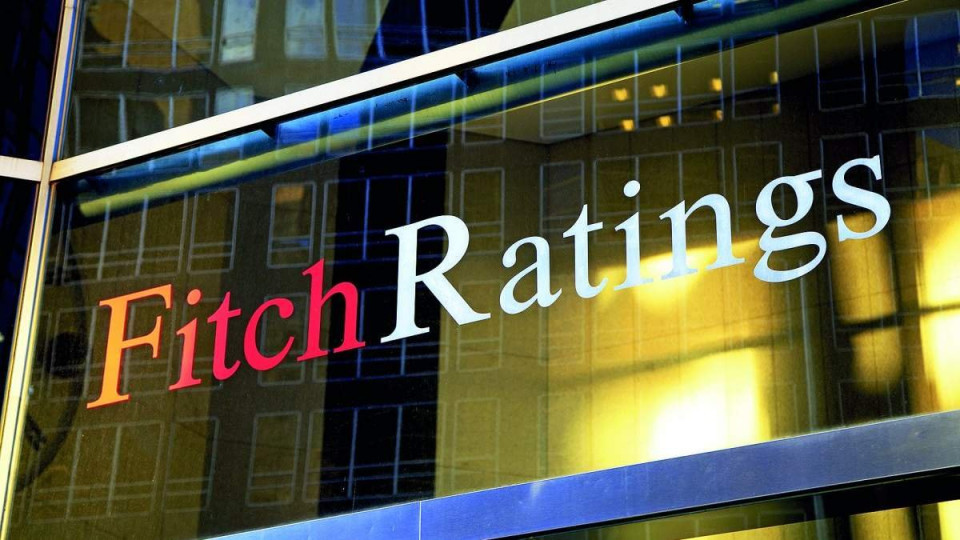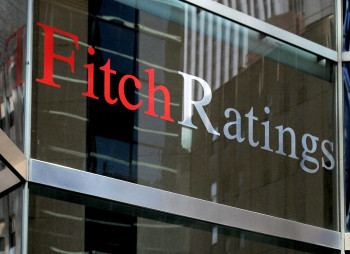Further Debt Restructuring Probable: The affirmation of Ukraine's Long-Term Foreign-Currency IDR at 'CC' reflects Fitch's view that a further foreign-currency commercial debt restructuring is probable, given the magnitude of economic damage from the war with Russia and resulting large fiscal needs in the medium term, and that a degree of burden sharing by commercial creditors is a likely condition of the large financial assistance extended by the official sector.
The 24-month deferral in August of Ukraine's Eurobond payments provided USD6 billion of external debt service relief, but leaves medium-term debt sustainability risks unresolved. Sovereign external debt service rises to a relatively high USD5.4 billion in 2024 (excluding USD3.5 billion deferred Eurobond interest payments, which could be capitalised) and USD7.0 billion in 2025. While the timing of any such restructuring remains uncertain, there will be greater impetus for negotiations if the security outlook improves, and as the expiration of the Eurobond standstill draws closer.
Huge Economic Cost: The Ukrainian economy contracted an estimated 31% in 2022, and net outward migration has steadily risen to 8 million (based on UN data, which may be overstated). There was some sequential recovery in economic activity in 3Q22 but energy outages following Russian strikes provide an additional headwind into 2023. Fitch forecasts GDP growth of 2% in 2023, with ongoing conflict preventing a sizeable return of refugees or large-scale investment.
Russia's attritional military tactics continue to cause huge economic damage, with costs to infrastructure alone already reaching near 85% of GDP by September 2022, according to Kyiv School of Economics estimates. Inflation accelerated to 26.6% in December and we forecast it eases slightly to 21% at end-2023 as loss of productive capacity, electricity shortages, and only gradually improving supply chain disruptions offset weak domestic demand.
Protracted War: Fitch expects the war to continue deep into 2023, within its current broad parameters. In the near term, there is an absence of politically credible concessions that could form the basis of a negotiated settlement. We do not decipher any marked change in President Putin's objective of undermining the sovereign integrity of the Ukrainian state, while Ukraine's successful counter-offensives in Kherson and Kharkiv make it even more unlikely it would cede substantial territory lost to Russia.
Despite the strategic advantage shifting more in Ukraine's favour in recent months, neither side appears to have a decisive military superiority to deliver on objectives, which could result in a long drawn-out conflict. Over a longer period, the prospect of a negotiated settlement becomes more likely, as costs to both sides mount, although this may well take the form more of a "frozen conflict" than sustainable peace.
Fiscal Deficit to Remain High: The general government deficit is estimated at a record high 20.1% of GDP in 2022, driven by defence spending, with state revenues increasing by 38% on the back of surging international grants. Fitch forecasts the deficit to narrow to 15.2% of GDP in 2023 due to partial enactment of budgeted real-terms social expenditure cuts and somewhat higher grants, but with defence outlays remaining well above the government target. We anticipate a high deficit into the medium term, due to reconstruction needs, greater social spending including on war veterans, and an increase on pre-war defence expenditure.
Public Debt Rises Sharply: Fitch projects general government debt/GDP increases by 37pp in 2022 to 80.2% (excluding government guarantees of 7.5% of GDP), and to 84.0% at end-2023, with support from a high GDP deflator averaging 23% in 2022-2023. The foreign-currency share of state debt has risen to 66%, adding to exchange rate risks, although the share of longer-term, concessional debt has also increased. There has been a marked rise in contingent liability risk, including from the energy and financial sectors, but regulatory forbearance will likely delay bank recapitalisations beyond 2023. More generally, the public debt trajectory is subject to a high degree of risk and uncertainty.
International Assistance Covers 2023 Financing: Deficit financing in 2023 remains highly dependent on the budgeted USD38 billion of bilateral and multilateral aid (up from USD32.8 billion disbursed in 2022). The EU and US have committed USD29 billion, and Fitch anticipates the full 2023 target will be met.
We expect the domestic rollover rate of local-currency government domestic debt, which fell to 65% in 2022, to partially recover this year helped by recent reserve requirement measures, a further rise in primary issuance yields, and current record-high bank liquidity (which has been supported by 28% growth in hryvnia deposits since end-February). This would allow a reduction in National Bank of Ukraine (NBU) state deficit financing, which accounted for 42% of the total since end-February despite falling to within the agreed UAH30 billion monthly limit since spiking in 2Q22.
Funding Uncertain Beyond 2023: It is likely that Ukraine successfully completes the four-month Programme Monitoring with Board Involvement agreed in December, but it remains unclear whether the IMF will extend an upper credit tranche programme without significantly greater predictability on the security and related macro-fiscal outlook. There is currently little visibility on financing sources beyond this year, with risks from the potential for donor fatigue, greater banking sector stress weakening demand for domestic debt, and constraints on the use of NBU fiscal financing if inflation remained high and there was a resumption of external financing pressure.
Grants Support Current Account: The current account posted a surplus of 6.2% of GDP (annualised) in 11M22, as international grants and stable remittances more than offset a deterioration in the trade and services balance. The size of private sector capital outflows remains relatively stable, contained by capital controls, and international reserves ended 2022 at USD28.5 billion, from USD27.6 billion at end-February. Fitch projects the current account surplus narrows to 2.6% of GDP this year on the back of higher import growth, and international reserves end 2023 at 3.8 months of current external receipts, from 4.0 months at end-2022.
Local-Currency IDRs Affirmed at 'CCC-': The lower default risk than on foreign-currency debt reflects the greater disincentives to include local-currency debt in any further debt restructuring, given just 5% is held by non-residents, while 55% is held by NBU and a further 32% by the domestic banking sector (half of which is state owned) for which there could be associated financial stability risks. We also do not anticipate strong international pressure to restructure domestic debt, partly due to additional concerns this could undermine efforts to revive demand for new government debt issuance.
Nevertheless, the 'CCC-' Long-Term Local-Currency IDR reflects the still substantial credit risk given the potential for the war to extend beyond this year, and uncertainty over financing sources to continue to meet large fiscal deficits, which add to liquidity risks.
ESG - Governance: Ukraine has an ESG Relevance Score (RS) of '5' for both political stability and rights and for the rule of law, institutional and regulatory quality and control of corruption. These scores reflect the high weight that the World Bank Governance Indicators (WBGI) have in our proprietary Sovereign Rating Model (SRM). Ukraine has a low WBGI ranking at the 32nd percentile, reflecting the Russian-Ukrainian conflict, weak institutional capacity, uneven application of the rule of law and a high level of corruption.
Factors that could, individually or collectively, lead to negative rating action/downgrade:
- The Long-Term Foreign-Currency IDR would be downgraded on signs that a renewed default-like process has begun, for example, a formal launch of a debt exchange proposal involving a material reduction in terms and taken to avoid a traditional payment default.
- The Long-Term Local-Currency IDR would be downgraded to 'CC' on increased signs of a probable default event, for example from severe liquidity stress and reduced capacity of the government to access financing, or to 'C' on announcement of restructuring plans that materially reduce the terms of local-currency debt to avoid a traditional payment default.
Factors that could, individually or collectively, lead to positive rating action/upgrade:
- The Long-Term Foreign-Currency IDR would be upgraded on de-escalation of conflict with Russia that markedly reduces vulnerabilities to Ukraine's external finances, fiscal position and macro-financial stability, reducing the probability of commercial debt restructuring.
- The Long-Term Local-Currency IDR would be upgraded on reduced risk of liquidity stress, potentially due to more predictable sources of official financing, greater confidence in the ability of the domestic market to roll over government debt, and lower expenditure needs.






